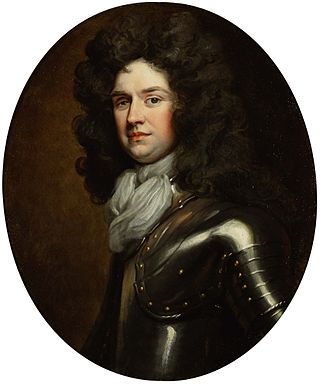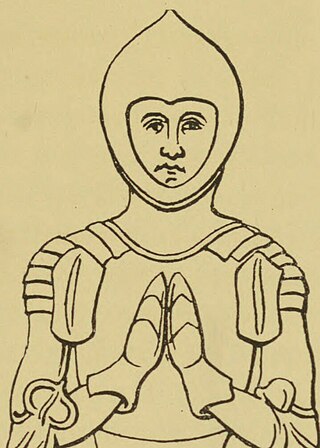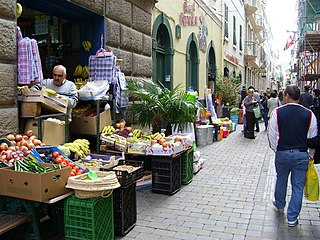| |||||
| Centuries: | |||||
|---|---|---|---|---|---|
| Decades: | |||||
| See also: | Other events of 1664 List of years in Ireland | ||||
Events from the year 1664 in Ireland.
| |||||
| Centuries: | |||||
|---|---|---|---|---|---|
| Decades: | |||||
| See also: | Other events of 1664 List of years in Ireland | ||||
Events from the year 1664 in Ireland.

Lionel Cranfield Sackville, 1st Duke of Dorset was an English peer and politician who served as Lord President of the Council from 1745 to 1751. He also twice served as Lord Lieutenant of Ireland from 1730 to 1737 and again from 1750 to 1755.

Earl of Portmore was a title in the Peerage of Scotland. It was created in 1703 for the Scottish military commander David Colyear, 1st Lord Portmore. He had already been created Lord Portmore in 1699 and was made Lord Colyear and Viscount of Milsington at the same time as he was granted the earldom, also in the Peerage of Scotland. He was the son of Alexander Colyear, who had been created a Baronet, of Holland, in the Baronetage of England on 20 February 1677. Lord Portmore married Catherine Sedley, Countess of Dorchester, a former mistress of James II. He was succeeded by his only surviving son, the second Earl. He represented Wycombe and Andover in Parliament. His grandson, the fourth Earl, sat as Member of Parliament for Boston. The fourth Earl died without surviving male issue in 1835 when the titles became extinct.

Catherine Colyear,suo jureCountess of Dorchester and Countess of Portmore, was an English noble and courtier. She was the mistress of King James II of England both before and after he came to the throne. Catherine was noted not for beauty but for her celebrated wittiness and sharp tongue.
Thomas Charles Colyear, 4th Earl of Portmore, styled Viscount Milsington from 1785 until 1823, was a British landowner and politician.

William Charles Colyear, 3rd Earl of Portmore (1745–1823) was a Scottish peer, styled Viscount Milsington until 1785.

Thomas Chaucer was an English courtier and politician. The son of the poet Geoffrey Chaucer and his wife Philippa Roet, Thomas was linked socially and by family to senior members of the English nobility, though he was himself a commoner. Elected fifteen times to the Parliament of England, he was Speaker of the House of Commons for five parliaments in the early 15th century.

Charles Colyear, 2nd Earl of Portmore, KT, known as Lord Milsington to 1730, of Portmore House, Weybridge, Surrey, was a British Whig politician who sat in the House of Commons between 1726 and 1730, when he succeeded to the peerage as Earl of Portmore. He subsequently became a Scottish representative peer in the House of Lords. He was a racehorse owner and was known as Beau Colyear for his conspicuous dress.

General David Colyear, 1st Earl of Portmore, was a Scottish general and Governor of Gibraltar.

Portmore Lough is a small lake in southwest County Antrim, Northern Ireland that drains water into nearby Lough Neagh. It is roughly circular and covers an area of 286 hectares. The Lough and its shoreland is designated a Ramsar site, a Special Protection Area (SPA) and an Area of Special Scientific Interest (ASSI). The lough is now part of a Royal Society for the Protection of Birds nature reserve.
Events from the year 1868 in Ireland.

Arthur Chichester, 1st Baron Chichester, of Carrickfergus in Ireland, was an English administrator and soldier who served as Lord Deputy of Ireland from 1605 to 1616. He was instrumental in the development and expansion of Belfast, now Northern Ireland's capital. Several streets are named in honour of himself and his nephew and heir Arthur Chichester, 1st Earl of Donegall, including Chichester Street and the adjoining Donegall Place, site of the Belfast City Hall.
Events from the year 1703 in the Kingdom of Scotland.
Events from the year 1700 in the Kingdom of Scotland.

St. Bride's Church was a Church of Ireland church located at the corner of Bride Street and Bride Road, Dublin, Ireland.

General John Leslie, 10th Earl of Rothes KT was a senior British Army officer who became Commander-in-Chief of the Royal Irish Army between 1758 and 1767.
The 1995 National Camogie League is a competition in the women's team field sport of camogie was won by Cork, who defeated Armagh in the final, played at St Finbarrs.

Irish Town is a pedestrianised street in the British Overseas Territory of Gibraltar. It is one of Main Street's sub-districts running parallel to it, from Cooperage Lane in the north to John Mackintosh Square in the south.
Portmore may refer to:
Juliana Colyear, Countess of Portmore was an English noblewoman. She was the third wife of Peregrine Osborne, 3rd Duke of Leeds, and later the wife of Charles Colyear, 2nd Earl of Portmore, and mother of the 3rd Earl.
James Dawkins, from 1835 James Colyear Dawkins was a British plantation and slave owner, and Member of Parliament for Chippenham from 1784 to 1812.